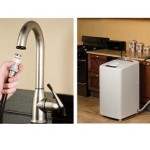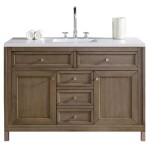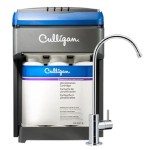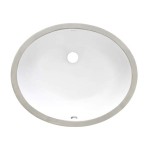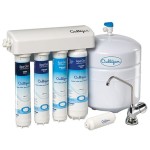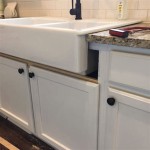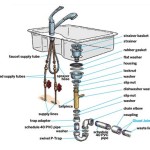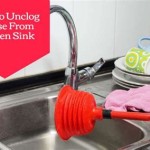Double Kitchen Sink Clogged on Both Sides: A Comprehensive Guide to Troubleshooting and Fixing
A double kitchen sink clogged on both sides can be a frustrating and inconvenient problem. It disrupts daily routines, making it difficult to wash dishes, prepare food, and maintain a clean kitchen. The causes of this issue range from simple blockages to more complex plumbing problems. Understanding the possible culprits and employing strategic troubleshooting steps can help you effectively address the clog and restore your sink's functionality.
Identifying the Cause of the Clog
Before attempting any repairs, it's crucial to determine the root cause of the clog. Several factors could be contributing to the blockage:
1. Food Debris and Grease: The most common cause of a double kitchen sink clog is the accumulation of food particles, grease, and other debris. These substances stick to the drain pipes and eventually build up, restricting water flow.
2. Hair and Soap Scum: Hair, soap scum, and other personal care products can also contribute to sink clogs, especially if your sink is connected to a garbage disposal. These substances can accumulate in the drainpipes, forming a sticky barrier that hinders water drainage.
3. Foreign Objects: Accidentally dropped objects like jewelry, utensils, or even small toys can become lodged in the drainpipe, causing a blockage. This is particularly common in households with children or pets.
4. Pipe Buildup: Over time, mineral deposits, rust, and other substances can accumulate in the drain pipes, leading to a gradual narrowing of the pipe diameter and reduced flow.
5. Tree Roots: In older homes with older plumbing systems, tree roots can penetrate the pipes, causing significant blockages and potentially leading to leaks.
Troubleshooting and Fixing the Clog
Once you've identified the likely cause of the blockage, you can employ appropriate troubleshooting methods:
1. Basic Plunging: Start with the simplest solution – plunging! Use a plunger specifically designed for sinks. Ensure the plunger creates a tight seal over the drain opening and vigorously push and pull the handle up and down. If the clog is superficial, this should dislodge the blockage and restore drainage.
2. Chemical Drain Cleaners: If plunging doesn't work, you can try a chemical drain cleaner. However, be careful as these products can be harsh and potentially damage your pipes. Use them as a last resort and always follow the manufacturer's instructions carefully.
3. Manual Cleaning: For more stubborn clogs, you might need to manually remove the blockage. This involves using a drain snake or auger. These tools are inserted into the drainpipe and rotated to break up the clog and pull it out. Be mindful of the length and diameter of the snake to ensure it reaches the blockage and effectively dislodges it.
4. Disassemble and Clean the Drain: If the clog persists despite the above measures, you might need to disassemble the drain assembly to remove the blockage. This typically involves removing the drain stopper, the tailpiece, and the P-trap. Clean any debris from these components and reassemble the drain assembly.
5. Professional Plumbing Assistance: If the clog is deeply embedded within the pipes, or you suspect a more serious plumbing issue, it's advisable to call a professional plumber. They have specialized tools and expertise to diagnose and resolve complex plumbing problems.
Preventive Measures to Avoid Clogs
While clogs can be annoying, implementing preventive measures can significantly reduce their occurrence:
1. Proper Disposal: Avoid pouring grease, oil, and other sticky substances down your drain. These substances solidify and contribute to clogs. Instead, dispose of them in a sealed container.
2. Use a Drain Strainer: Place a drain strainer over your sink to catch food debris and hair before they reach the drainpipe.
3. Regular Cleaning: Clean your drains regularly with baking soda and vinegar. This natural solution helps to break down grease and grime, preventing buildup.
4. Preventative Plumbing Maintenance: Schedule periodic plumbing inspections and maintenance. These checkups can identify potential issues before they escalate into major problems.
By addressing the root cause of the clog, employing appropriate troubleshooting methods, and implementing preventative measures, you can effectively tackle a double kitchen sink clog and restore your sink's functionality.
How To Fix A Kitchen Sink Clogged On Both Sides Expert Guide Clover Contracting
Why Is My Double Kitchen Sink Backing Up To The Other Side Flohawks Plumbing Septic
How To Unclog A Double Sink Clumsy Crafter
Both Sides Of Kitchen Sink Filling With Water Explained
Kitchen Sink Clogged On Both Sides Do This Pv Heating Cooling Plumbing
How To Unclog A Double Sink Clumsy Crafter
How To Unclog A Double Sink Quick Fast Solutions
Slow Sink Drain Kitchen Not The Trap
Why Is My Kitchen Sink Clogged On Both Sides Croppmetcalfe
How To Fix A Clogged Kitchen Sink On Both Sides
